Inside The New York Botanical Garden
Archive: January 2009
Posted in Gardens and Collections, Learning Experiences, Programs and Events on January 30 2009, by Plant Talk
Tour Guide-led Walks Enlighten Visitors
 |
Samantha Buck is an Interpretation Intern for Public Education. |
 Recently, I took a Forest Tour with the very knowledgeable Garden Tour Guide Ken Lloyd. For those of you who don’t know what a Garden Tour Guide is, as I didn’t, they are expertly trained volunteers who are essential to the Garden’s success.
Recently, I took a Forest Tour with the very knowledgeable Garden Tour Guide Ken Lloyd. For those of you who don’t know what a Garden Tour Guide is, as I didn’t, they are expertly trained volunteers who are essential to the Garden’s success.
It was a nippy day to say the least, especially since I was unprepared for the tour and as such hadn’t dressed in layers as I normally would have had I known (I take pride in my preparedness being a Mainer born and raised). So off I went with Ken in my dress pants and sneakers, braving the chilly air and our runny noses to explore some of the trees in the Garden.
Our first stop was at the umbrella pines that, as Ken pointed out, were planted in the very early 1900s. Their red-colored bark and multi-stemmed trunks made them a unique stop on our adventure. Just past the Everett Children’s Adventure Garden, we stopped at the Chinese elms along the road. Ken explained how Dutch elm disease, an introduced fungus, had decimated the American elm population. He also stated that there are some elm species that can be treated for the disease and others that are resistant to it.
On entering the Forest, I felt I was in the most peaceful place in the city. The Forest is kept as natural as possible—there is no snow removal from the paths, no native trees are cut, and life is allowed to take its course. However, invasive species that encroach the area are removed and fires that start are put out. None of the descriptive signs I encountered elsewhere on the Garden grounds were present in the Forest, but Ken was able to discern the species from their bark or the form of the tree itself, by the way the branches grow and the shape of their buds. The only signs present were placed only on a few trees in order to track changes that occur over time. Volunteers record these changes once a month.
I also learned the reason why the trees aren’t any bigger or older in the Forest, despite the lack of human involvement. During the last Ice Age, a fair bit of the soil was removed by glaciers and deposited into the ocean. As a result of this shallow soil, it is difficult for the trees to establish a good root system that would allow them to reach monstrous heights.
I highly recommend taking one of The New York Botanical Garden’s many Tour Guide-led tours—it was definitely one of the highlights of my internship here. I learned a substantial amount despite my damp, cold feet. Just be sure to dress appropriately for the weather so you’re able to immerse yourself completely in the experience.
A guided Forest Tour will be held on Saturday, January 31, at 12:30 p.m. Meet at the Reflecting Pool in the Leon Levy Visitor Center.
Check out Saturday’s programming.
Check out Sunday’s programming.
Posted in NYBG in the News, People on January 29 2009, by Plant Talk
Last in a 3-Part Series
 |
Todd Forrest is Vice President for Horticulture and Living Collections.
|
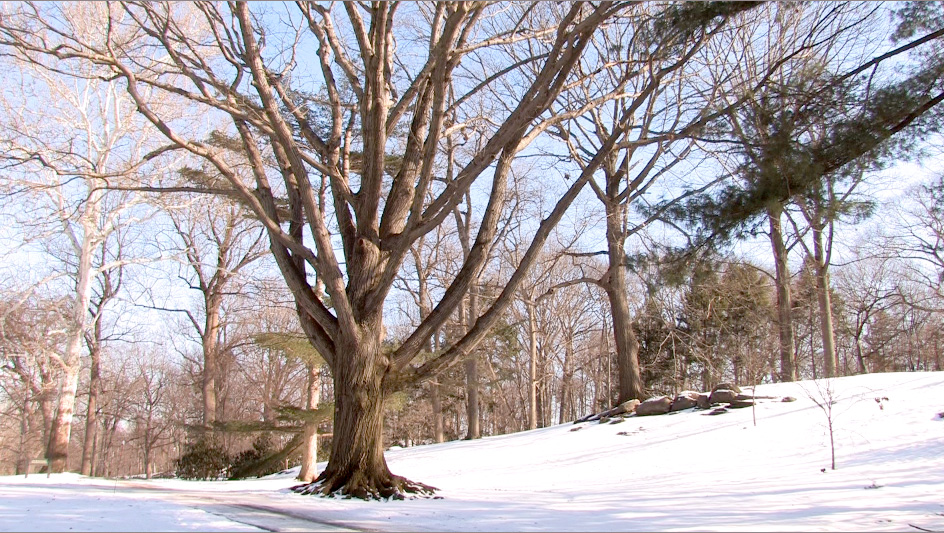 A majestic red oak grows alongside a trail in the 50-acre old-growth Forest at the heart of The New York Botanical Garden. In the mid-1980s, scientists determined that this tree was nearly 250 years old. It sprouted from an acorn before the Revolutionary War and grew to maturity as New York blossomed from a colonial outpost into the greatest city in the world.
A majestic red oak grows alongside a trail in the 50-acre old-growth Forest at the heart of The New York Botanical Garden. In the mid-1980s, scientists determined that this tree was nearly 250 years old. It sprouted from an acorn before the Revolutionary War and grew to maturity as New York blossomed from a colonial outpost into the greatest city in the world.
Every time I pass this oak I am reminded of the passion, vision, and dedication to adding something wonderful to our city and our country that drove our predecessors to create The New York Botanical Garden in 1891. I am reminded that they chose this site in 1895 because of the unparalleled beauty of its natural landscape and then preserved this landscape as the surrounding city grew and grew. I am reminded of the countless people who have come to the Garden to learn about plants: their beauty, their natural history, their planting and care, their genomes. I am reminded of my responsibility to keep the Garden’s plants and landscape healthy, diverse, and beautiful so that others today and in the future will have the opportunity to make the sustaining connection to nature that has been such a gift to me.
Botanical gardens are where art, nature, and science come together. They are where artists and gardeners come for inspiration, where students and teachers come to experience and better understand the beauty and complexity of nature, and where scientists come to work on solving nature’s most vexing mysteries. Botanical gardens matter now more than ever.
Send a letter of support to state government leaders and forward the Save the Planet widget (at right) to your friends so that they, too, can help.
Hear from the Garden’s own Fran Coelho and Jeff Downing as they explain in their own words just why botanical gardens matter.
Posted in NYBG in the News, People on January 28 2009, by Plant Talk
Second in a 3-Part Series
 |
Jeff Downing is Vice President for Education.
|
 At a moment in history when an ever-increasing body of scientific evidence indicates that climate change is real and related to human activity (We collectively burn 85 million barrels of oil a day, according to The New York Times)… At a moment in history when an ever-increasing body of scientific evidence indicates that climate change is real and related to human activity (We collectively burn 85 million barrels of oil a day, according to The New York Times)…
When a growing community of researchers, educators, and concerned parents all lament the increasing distance between children and nature, and the negative consequences for children’s health, education, and environmental understanding…
At a time when technology offers a synthesized, digitized alternative to actual physical activity, reinforcing sedentary habits and increasing the incidence of childhood obesity and a host of related health issues…
In an era when American competitiveness is questioned and our ability to stimulate students’ interest in the scientific fields that will foster the engines of future economic growth lags other countries…
As more and more Americans become engaged in the discussion about the world’s food supply—where does it come from, what’s in it, is it safe, and can I do more to grow some portion of it at home?…
And when many jobs in horticulture and related fields go wanting for applicants at a time when millions of Americans are looking for new career paths that might provide rewarding careers, while at the same time helping in some small way to reduce the impacts of these pressing national and global issues…
…Botanical gardens matter.
Education is fundamental to the core mission of botanical gardens. At The New York Botanical Garden, education programs reach students from pre-K to post-grad and are designed to develop environmental awareness, to assist in improving science education in schools, and to prepare students for their own “Green Careers” in horticulture-related professions. Annually, 75,000 schoolchildren, many from the Bronx, visit the Garden to learn about plant science, gardening, and the rich ecology of our local forests, rivers, and wetlands.
Who wants to tell those schoolchildren to stay inside?
Send a letter of support to state government leaders and forward the Save the Planet widget (at right) to your friends so that they, too, can help.
Hear from the Garden’s own Fran Coelho and Jeff Downing as they explain in their own words just why botanical gardens matter.
|
Posted in NYBG in the News, People, Science on January 27 2009, by Plant Talk
First in a 3-Part Series
| Living museums such as The New York Botanical Garden face a 55 percent cut in New York State funding this fiscal year, and the budget for zoos, botanical gardens, and aquaria may be completely eliminated in the next fiscal year. If Governor Paterson’s proposal is passed by the New York State Legislature, it will destroy a program that has provided consistent and steadily increasing support for the Garden for over 30 years.New York Times reporter Andrew Revkin recently blogged about the situation on Dot Earth. In response, the Garden’s Vice Presidents for Science, Education, and Horticulture each posted comments to the blog regarding why botanical gardens matter.
Their insightful remarks are so moving that we are presenting them here in Plant Talk in a three-part series beginning today. We hope their stories will inspire you to comment, to send a letter of support to state government leaders, and to forward the Save the Planet widget to your friends so that they, too, can help.
 |
James S. Miller, Ph.D., is Dean & Vice President for Science and the Rupert Barneby Curator for Botanical Science.
|
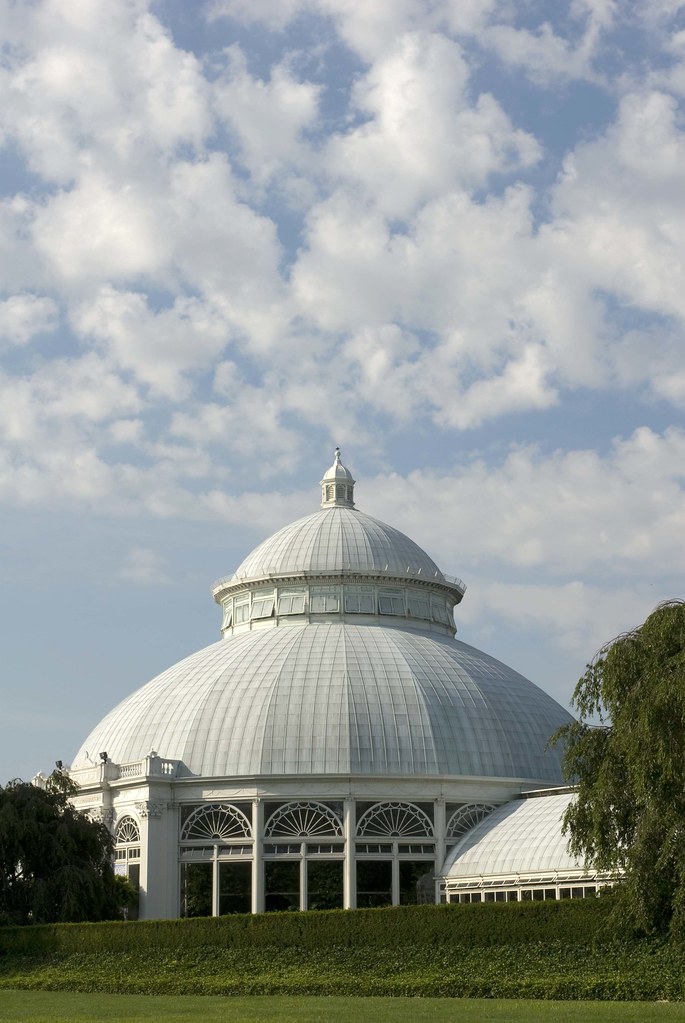 I grew up in a part of Maryland where I could walk out the door of our house and into the woods, where I learned to appreciate and value the diversity of plants and animals through regular contact. The world was a simpler place with fewer than 3 billion people. I grew up in a part of Maryland where I could walk out the door of our house and into the woods, where I learned to appreciate and value the diversity of plants and animals through regular contact. The world was a simpler place with fewer than 3 billion people.
As the current world population approaches 7 billion, an ever-increasing percentage of children are growing up in urban environments where contact with nature is more difficult, certainly less frequent, and as development continues, the places where one can experience natural environments become fewer and fewer. I fear that more people today do not have the regular contact that allowed me to develop an affection for nature, which guides my fervent desire to preserve it so that future generations can appreciate the wonder of the plants and animals that share our planet.
In this light, I feel that botanical gardens can provide us with the opportunity to see and learn about plants and experience the spectacular diversity that they present. Just as we can learn about animals at a zoo, we can learn to care about plants at botanical gardens and appreciate their importance to us as food, medicines, other materials, and understand that they define the environment in which all terrestrial life exists.
Our only hope for preserving the amazing biological diversity on Earth is the opportunity to learn enough about plants in botanical gardens and elsewhere so that future generations care enough to make their continued protection and sustainable use a priority.
Hear from the Garden’s own Fran Coelho and Jeff Downing as they explain in their own words just why botanical gardens matter. |
Posted in Gardening Tips on January 26 2009, by Sonia Uyterhoeven
A Weedy Mess: Keeping My Life in Order
 Sonia Uyterhoeven is Gardener for Public Education at The New York Botanical Garden.
Sonia Uyterhoeven is Gardener for Public Education at The New York Botanical Garden.
I am always surprised by the long weekends we have in January and February. I seem to remember all the holidays except for the ones that sneak up in mid-winter. Since I never plan for them, they turn into three days of extended housecleaning. The piles on my desk diminish and bills finally get filed in the right place. During these moments, I swear to good housekeeping practices that I never abide by.
Gardening is much the same. If I abide by a few simple rules and good horticultural practices then I won’t find myself swamped with one big green, leafy mess. Today, I will focus on just one aspect of horticulture: good weeding practices. Here are a few simple tips to make weeding easier.
- Keep your garden a reasonable size: Don’t be over ambitious. Be honest about how much time you intend to spend in your garden and how much work it will take.
- Stagger your spring planting: Freshly cultivated soil is an invitation for weeds. If you plant your beds all at once, you will be weeding them at the same time. Stagger you planting over a few weeks.
- Low maintenance plants for the low maintenance gardener: If you don’t like weeding, choose plants that out-compete weeds. Select plants with broad foliage and heavy branching or ones that are large, tall, or vigorous growers. If the plant is doing its job of filling up the space, there will not be enough room or light for weeds to enter.
- Weed often: It’s important to weed often not only to keep weeds at bay, but also for your general health. If you try weeding your entire garden all at once, you will have sore muscles at the end of the day.
- Attack flowering weeds or weeds that are about to flower first: If you let weeds go to seed, you will have an uphill battle. Prioritize by removing flowering weeds first.
- Weed early in the season: Tiny weeds are easier to pull than big weeds. Early weeding also gives the plants you want in your garden a better chance of becoming established.
- Hoe when dry, hand when wet: If your soil is dry, run a hoe through your garden. Weeds exposed to hot sun without any water will shrivel up and die in no time. Rake off the debris. If you try using a hoe when your soil is wet, weeds will simply re-root. When your soil is wet is the time to tackle deep-rooted weeds like dandelions—they will be much easier to pull
.
Posted in Programs and Events, Wildlife on January 23 2009, by Plant Talk
Colors of Cardinals, Ducks, and More Dazzle Against the Snow
 |
Debbie Becker leads a free bird walk at the Garden every Saturday from 11 a.m. to 12:30 p.m., beginning at the Reflecting Pool in the Leon Levy Visitor Center.
|
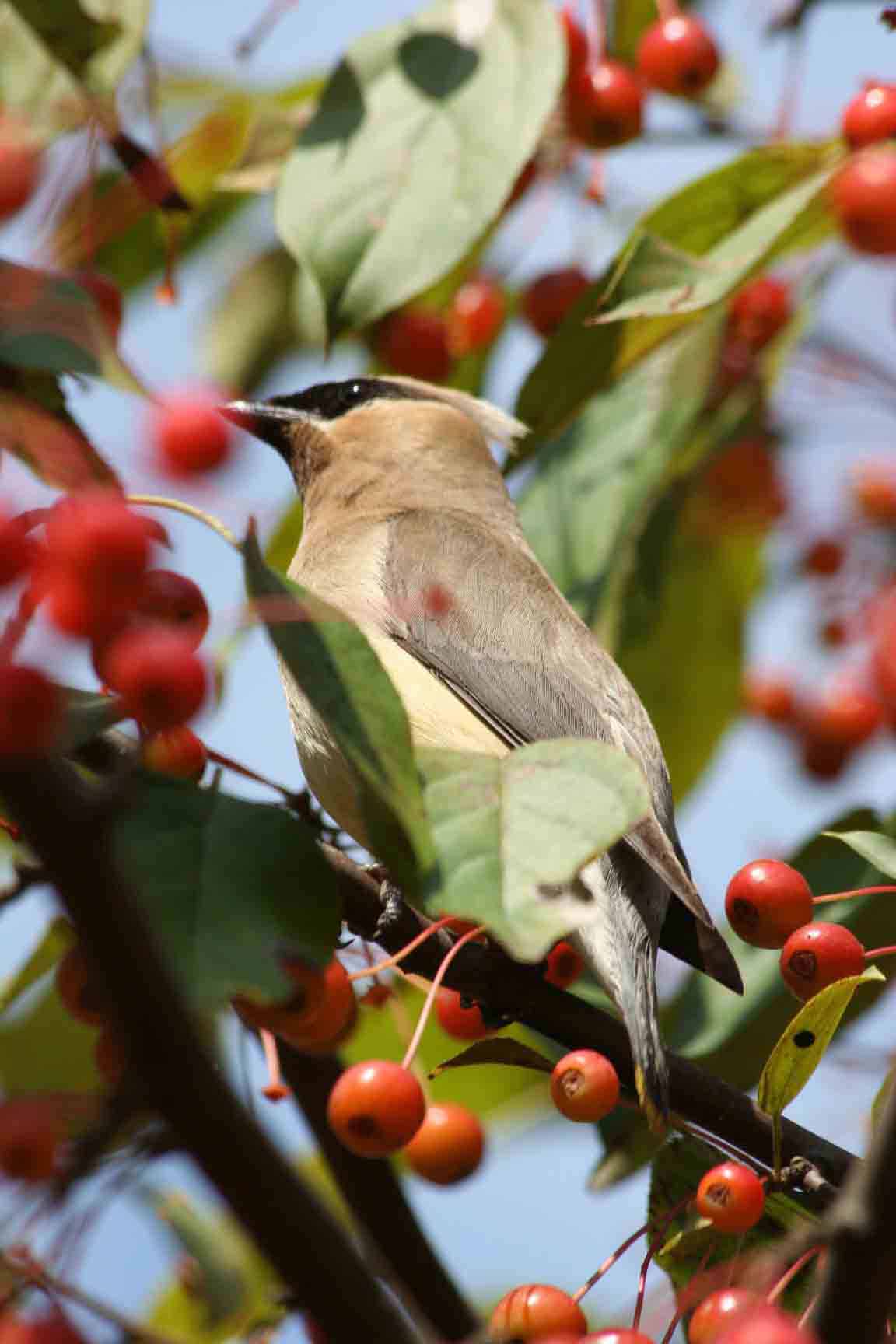 Winter birding at NYBG is always a delight. Once the deciduous trees have shed their leaves all is visible. Streaks of winter sun embrace the Forest and ignite the trees in deep silhouettes and wonderful brown hues. There is something about the frosty sunlight that brings out the vibrant color of the birds. The red-bellied woodpecker’s cap glows in red amber as the bird climbs a tree barking for attention. The northern cardinals are so brilliant in the sun as they sit on the bare branches—their red and orange feathers a sharp contrast to the white snow and brown tree stems. Even the blue jays’ cerulean feathers glow like a Matisse as the birds peck around the snow for morsels to eat.
Winter birding at NYBG is always a delight. Once the deciduous trees have shed their leaves all is visible. Streaks of winter sun embrace the Forest and ignite the trees in deep silhouettes and wonderful brown hues. There is something about the frosty sunlight that brings out the vibrant color of the birds. The red-bellied woodpecker’s cap glows in red amber as the bird climbs a tree barking for attention. The northern cardinals are so brilliant in the sun as they sit on the bare branches—their red and orange feathers a sharp contrast to the white snow and brown tree stems. Even the blue jays’ cerulean feathers glow like a Matisse as the birds peck around the snow for morsels to eat.
Perhaps the most spectacular sight in winter are the ducks on the Bronx River. White-and-crimson-orange hooded mergansers bob in the gentle flow of the river, their white heads parallel to the white snow on the river’s banks. The female with her spiked burgundy head is a sharp contrast and a delight to watch as she dives under the water searching for food.
Cedar waxwings dressed in yellow, red, and beige with a black mask pop yellow, red, and purple crabapples off the branches and into their beaks, making the perfect palette of color come alive.
Tiny black, gray, and white chickadees dance on the sweet gums’ brown sticky seed balls, pecking inside for the last of the autumn treat. Flocks of white-throated sparrows dance in the oak leaves on the ground, hopping back and forth in efforts to dislodge a hibernating spider from its berth. It is a well-choreographed movement that can be played in one’s mind to Beethoven’s Fifth.
One of the great joys of winter birding is hand-feeding chickadees. It is at this time of year that the chickadees, tufted titmice, and occasionally a cardinal are apt to land in one’s outstretched palm if you offer black oil sunflower seeds or roasted peanuts. The birds need the food for nourishment and to keep warm during the cold days of winter. Chickadee use a technique of shivering to keep their body temperatures high enough to survive and the protein from the sunflower and peanuts give them the fuel to perform the shivering technique.
Red-tailed hawks, Cooper’s hawks, and sharp-shinned hawks are also quite visible as they quietly sit on a branch waiting to pounce on their next victim.
In the quietness of the snow, in the shadows of the winter sun, the birds often reflect the silence of the season with a warm melody of song.
Check out Saturday’s programming
Check out Sunday’s programming
Posted in Learning Experiences, Programs and Events on January 22 2009, by Plant Talk
 |
Jeff Downing is Vice President for Education. |
In the past year the Garden has developed a number of training programs in conjunction with the New York City Parks Department to help increase the pool of capable job candidates. First, the Garden’s Horticulture and Education divisions collaborated on an urban tree care course to train a new generation of Parks foresters. Next, the Garden designed a special course for the Parks Opportunity Program, which trains local career-seekers in the fundamental skills necessary for the numerous vacant horticulture positions at the Parks Department and elsewhere. Recently, the Garden devised yet another program, one that is training 30 competitively selected 18–24-year-olds to help facilitate Mayor Bloomberg’s Million Trees Initiative.
The common thread in all of these wonderful initiatives is opportunity: Even in uncertain economic times the field of horticulture offers a wealth of career prospects for those willing to learn the required professional skills. And the opportunities are not just in New York City but throughout the region and beyond.
It has hit me that we at the Garden need to do a better job of spreading the word about the multitude of horticulture-related career tracks—from propagation and plant care to arboriculture, landscape and garden design, and horticultural therapy (using plants in therapeutic settings). So in the fall, the Garden’s Continuing Education program organized a couple of free Career Information Sessions and asked recent Continuing Ed certificate recipients to come and discuss their experience in the Garden’s education program and how it helped them get started in a new career.
Landscape Design graduate Robert Welsch talked about his burgeoning business, Westover Landscape Design, in Westchester. Sheri Forster explained how the Horticulture certificate she earned just this past spring allowed her to jumpstart a thriving business of her own, The Scottish Gardener, in Manhattan. Other former students and program instructors rounded out the evenings, giving their own unscripted and unedited appraisals of the business of horticulture and the Garden’s education programs. The give and take was free flowing, and those who came asked all the questions I would want to know if I were thinking about a new career such as:
- If I invest the time and money to learn these skills, will there really be career opportunities available when I complete a certificate?
- Do the Garden’s certificate programs provide all the knowledge and skills needed to really do this?
- Do I have to commit to a whole program before I really know whether this is for me, or can I start with a short introductory class and see how it goes?
If you missed these informative sessions but are interested in learning the answers to these questions (and any others) about careers in horticulture and landscape design, we’ve arranged to do the whole thing again, with a new group of students and instructors. So mark your calendar for Wednesday, January 28, from 6 to 8 p.m. and pre-register to attend our free Career Information Session.
I hope to see you there!
Posted in Exhibitions, Programs and Events, Science on January 21 2009, by Plant Talk
 |
Nick Leshi is Associate Director of Public Relations and Electronic Media. |
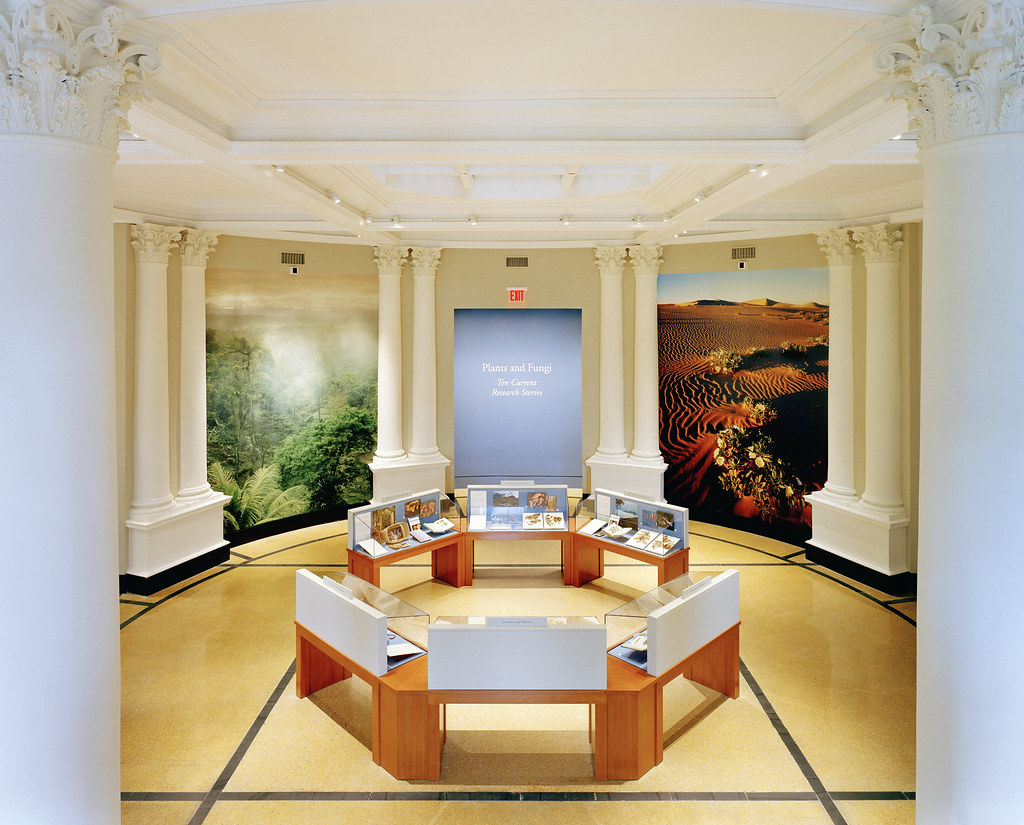 When I talk about The New York Botanical Garden, one phrase I tend to repeat over and over is: “No matter what the weather is like outside, there is always something to see and do here, both indoors and out.” In addition to the beauty of the Garden’s grounds and living collections in every season, there are also great indoor attractions. One of my absolute favorites is located on the fourth floor of the Library building—the permanent exhibition Plants and Fungi: Ten Current Research Stories.
When I talk about The New York Botanical Garden, one phrase I tend to repeat over and over is: “No matter what the weather is like outside, there is always something to see and do here, both indoors and out.” In addition to the beauty of the Garden’s grounds and living collections in every season, there are also great indoor attractions. One of my absolute favorites is located on the fourth floor of the Library building—the permanent exhibition Plants and Fungi: Ten Current Research Stories.
The exhibition, housed in the grand Britton Science Rotunda and Gallery, allows visitors to explore the important research being conducted by Botanical Garden scientists here in the Bronx and around the world. Massive mural images of the Garden’s founders, Nathaniel Lord Britton and Elizabeth Knight Britton, overlook a map showing the corners of the world where our scientists have traveled for field research to solve some the mysteries of nature and to better understand the role of plants and fungi in our lives, part of the Garden’s overall mission as an advocate for the plant kingdom.
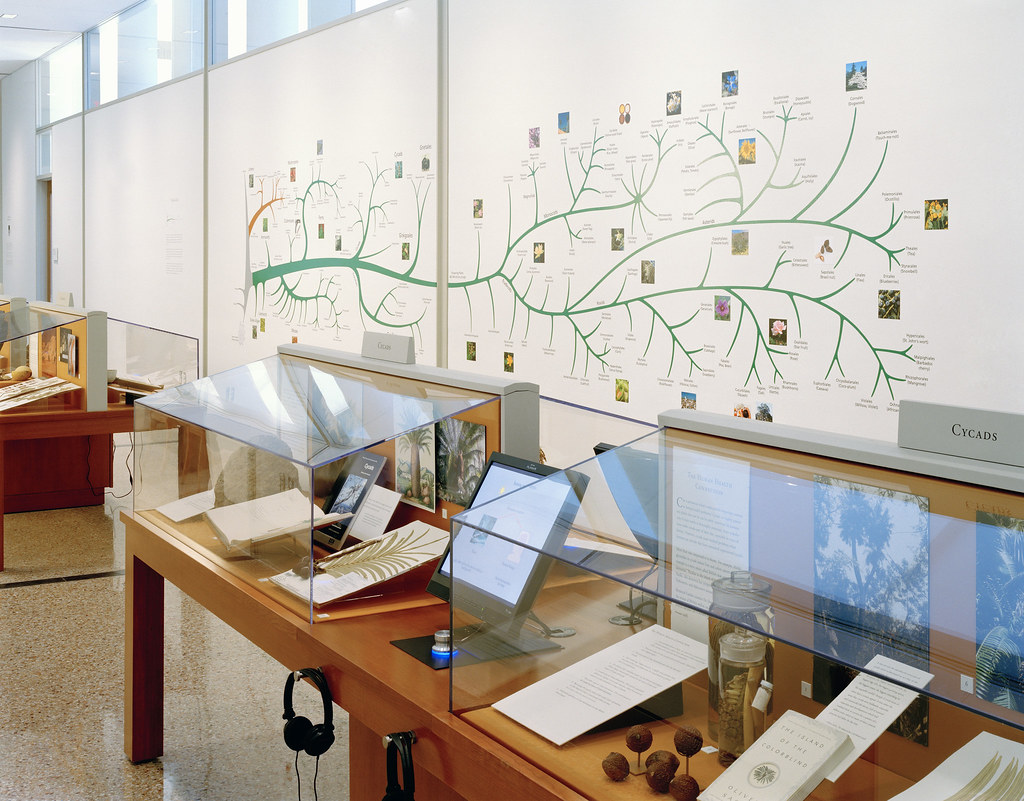 The rotunda features multiple displays illustrating the “William C. Steere Tradition,” with information on mosses, lichen, and three panels on mushrooms and berries. It educates the public on the legacy and influence of the man for whom the adjacent William and Lynda Steere Herbarium is named and where over 7 million plant and fungi specimens are archived. Computer terminals in the Gallery allow visitors to access the online specimen catalog from the C.V. Starr Virtual Herbarium.
The rotunda features multiple displays illustrating the “William C. Steere Tradition,” with information on mosses, lichen, and three panels on mushrooms and berries. It educates the public on the legacy and influence of the man for whom the adjacent William and Lynda Steere Herbarium is named and where over 7 million plant and fungi specimens are archived. Computer terminals in the Gallery allow visitors to access the online specimen catalog from the C.V. Starr Virtual Herbarium.
Other computer stations in the exhibition provide audio-video presentations explaining Garden scientists’ research on rice, cycads, brazil nuts, squashes, ferns, and vanilla orchids. Visitors young and old can see how modern tools such as DNA fingerprinting as well as classic techniques of plant exploration are used, and how scientists are studying vital topics like genetic diversity in rice and a nerve toxin in cycads that may provide insight into neurological diseases.
You can meet some of the scientists in person and hear them discuss their research as part of the 2009 Gallery Talks series Around the World with Garden Scientists in the Britton Science Rotunda and Gallery. Robbin Moran, Ph.D., kicks off the series this Saturday, January 24, at 1 p.m. with his presentation “The Fascinating World of Ferns” and provides a behind-the-scenes tour of the Herbarium.
Posted in Gardening Tips on January 20 2009, by Sonia Uyterhoeven
Easy Design Steps for the Home Gardener
 Sonia Uyterhoeven is Gardener for Public Education at The New York Botanical Garden.
Sonia Uyterhoeven is Gardener for Public Education at The New York Botanical Garden.
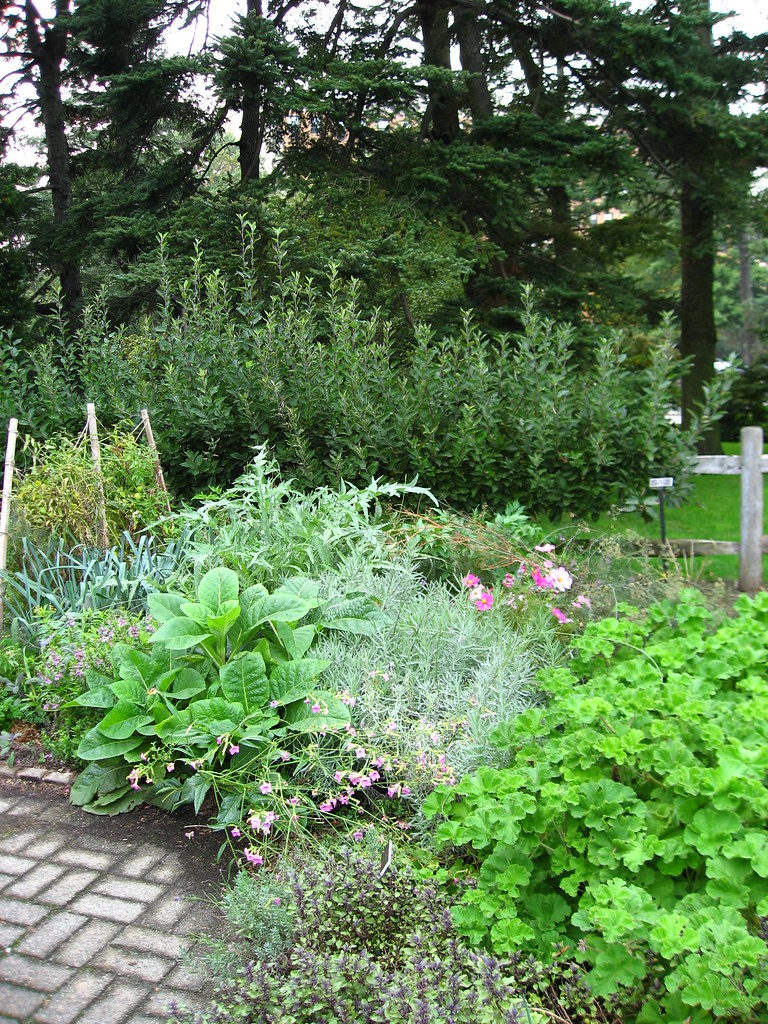 A few years ago I designed a French kitchen garden (potagér). I was under a time constraint to come up with ideas, so I fell back on some good advice that I was given at the beginning of my career. “Why do things on your own when you can always solicit the help of others?” In terms of design, the easiest way to do this is to make use of a good library. Books are full of good ideas that can be borrowed and transposed into your own creations.
A few years ago I designed a French kitchen garden (potagér). I was under a time constraint to come up with ideas, so I fell back on some good advice that I was given at the beginning of my career. “Why do things on your own when you can always solicit the help of others?” In terms of design, the easiest way to do this is to make use of a good library. Books are full of good ideas that can be borrowed and transposed into your own creations.
My initial task was to construct a framework for the garden. Raised beds provided a structure for much of the garden, but an extensive open area was up for grabs. Did I want an orderly, linear display in this area or flowing swaths of texture and color comprised of a conglomerate of herbs, flowers and vegetables?
 The answer was my typical “Let’s try a little of everything.” I found a wonderful illustration of a kitchen garden that contained tidy, linear rows that were separated in the middle with a bountiful oasis of flowers and herbs.
The answer was my typical “Let’s try a little of everything.” I found a wonderful illustration of a kitchen garden that contained tidy, linear rows that were separated in the middle with a bountiful oasis of flowers and herbs.
In the illustration an espalier of apples lined the sides of the middle expanse and acted as a transition from the linear vegetable rows to the free-flowing flowers. In my design I replaced the espaliers of apples with an espalier of tomatoes. This idea came from another book that described unusual ways to stake your tomatoes.
Once I had decided on the overall structure, the rest of the design quickly fell into place. Vegetables filled the raised beds, herbs and flowers spilled over the edges. Cute little ‘Tumbling Tom’ tomatoes spilled over the side of one bed lined by colorful ornamental peppers. With the structure in place, it was now a matter of selecting my choices from a myriad of vegetables and herbs.
Attention was paid to companion planting—potatoes joined peas in one bed, nasturtiums frolicked with tomatoes in another and rue snuggled up to a fig. Containers of sweet peas were supported by homemade teepees made from bamboo stakes. Marigolds skirted the sides in a hopeful attempt to ward off aphids.
Designing gardens, whether for vegetables or flowers, can be fun and easy. Borrowing ideas from other sources is a great way to start. Begin the process by staging your garden scene with a structure or a framework. Then carefully plug in the plants and any decorative elements.
Designs work best when you work with different layers—different heights, different shapes, different textures. To ensure that you do not end up with a cacophony of colors and textures, remember to apply the design principles of unity and repetition. A good design should form a coherent whole. Repetition of color, shapes, and textures are an easy way of creating a sense of continuity.
Winter is a wonderful time to sit down with design books and catalogs to start planning the gardening year ahead. Have fun.
Posted in Exhibitions, Programs and Events on January 16 2009, by Plant Talk
The Legacy of George Washington Carver
 |
Dachell McSween is Publicity Coordinator at The New York Botanical Garden. |
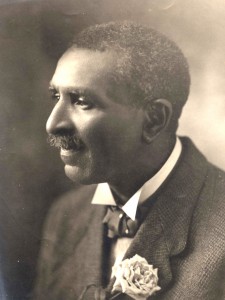
One of my favorite times in the Garden is in January. Yes, I know it is cold outside and it gets dark early, but I look forward to seeing The Life and Work of George Washington Carver exhibit and program in the Everett Children’s Adventure Garden. This fun and informative exhibit looks at the life of George Washington Carver, the renowned plant scientist who created hundreds of uses for peanuts, soybeans, and sweet potatoes.
Dr. Carver was born to slave parents in Diamond Grove, Missouri, in 1864. As a child, he developed an early interest in plants. In fact, he became known as the “plant doctor” for helping neighbors and friends with ailing plants. He learned to read, write, and spell at home, because there were no schools for blacks in his hometown. In 1891 he became the first black person to enroll at Iowa State College of Agriculture and Mechanic Arts, known today as Iowa State University. After completing his Bachelor’s Degree in 1894, Dr. Carver’s professors encouraged him to stay on as a graduate student. He became known for his excellence in plant breeding and was appointed to Iowa State’s faculty, becoming its first black faculty member.
The exhibit in the Children’s Adventure Garden makes me appreciate all of Dr. Carver’s vast accomplishments. I enjoy seeing children transform into “plant scientists” by putting on lab coats and picking up a magnifying glass to diagnose and remedy sick plants, just like Dr. Carver did as a child. The children also create a personal science timeline, plant a soybean to take home, and enjoy stepping into the interactive yellow replica of Dr. Carver’s Jesup wagon, which he used as a traveling school to help spread his agricultural knowledge to farmers and homemakers. The wagon was named after Morris K. Jesup, a New York financier and philanthropist.
As we look forward to celebrating Dr. Martin Luther King Jr. Day and the inauguration of America’s first black president, it is inspiring to see children get excited about this remarkable program that encourages them not only to learn about plant science, but also to dream big and impact the world, just like Dr. Carver did.
Check out Saturday’s programming
Check out Sunday’s programming

 Recently, I took a Forest Tour with the very knowledgeable Garden Tour Guide Ken Lloyd. For those of you who don’t know what a Garden Tour Guide is, as I didn’t, they are expertly trained volunteers who are essential to the Garden’s success.
Recently, I took a Forest Tour with the very knowledgeable Garden Tour Guide Ken Lloyd. For those of you who don’t know what a Garden Tour Guide is, as I didn’t, they are expertly trained volunteers who are essential to the Garden’s success.








 Winter birding at NYBG is always a delight. Once the deciduous trees have shed their leaves all is visible. Streaks of winter sun embrace the Forest and ignite the trees in deep silhouettes and wonderful brown hues. There is something about the frosty sunlight that brings out the vibrant color of the birds. The red-bellied woodpecker’s cap glows in red amber as the bird climbs a tree barking for attention. The northern cardinals are so brilliant in the sun as they sit on the bare branches—their red and orange feathers a sharp contrast to the white snow and brown tree stems. Even the blue jays’ cerulean feathers glow like a Matisse as the birds peck around the snow for morsels to eat.
Winter birding at NYBG is always a delight. Once the deciduous trees have shed their leaves all is visible. Streaks of winter sun embrace the Forest and ignite the trees in deep silhouettes and wonderful brown hues. There is something about the frosty sunlight that brings out the vibrant color of the birds. The red-bellied woodpecker’s cap glows in red amber as the bird climbs a tree barking for attention. The northern cardinals are so brilliant in the sun as they sit on the bare branches—their red and orange feathers a sharp contrast to the white snow and brown tree stems. Even the blue jays’ cerulean feathers glow like a Matisse as the birds peck around the snow for morsels to eat.






